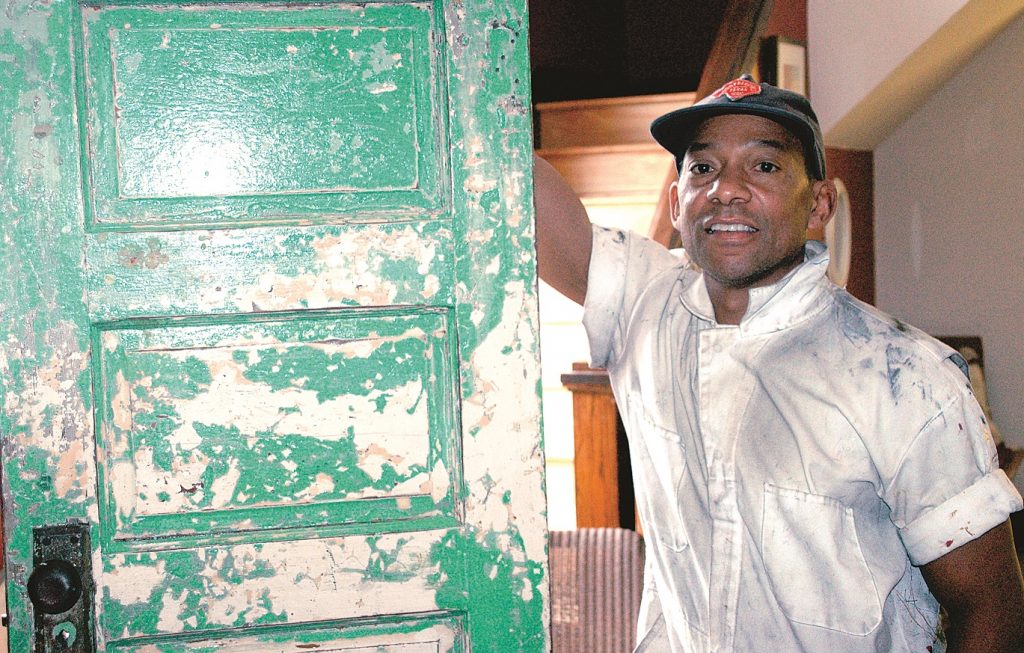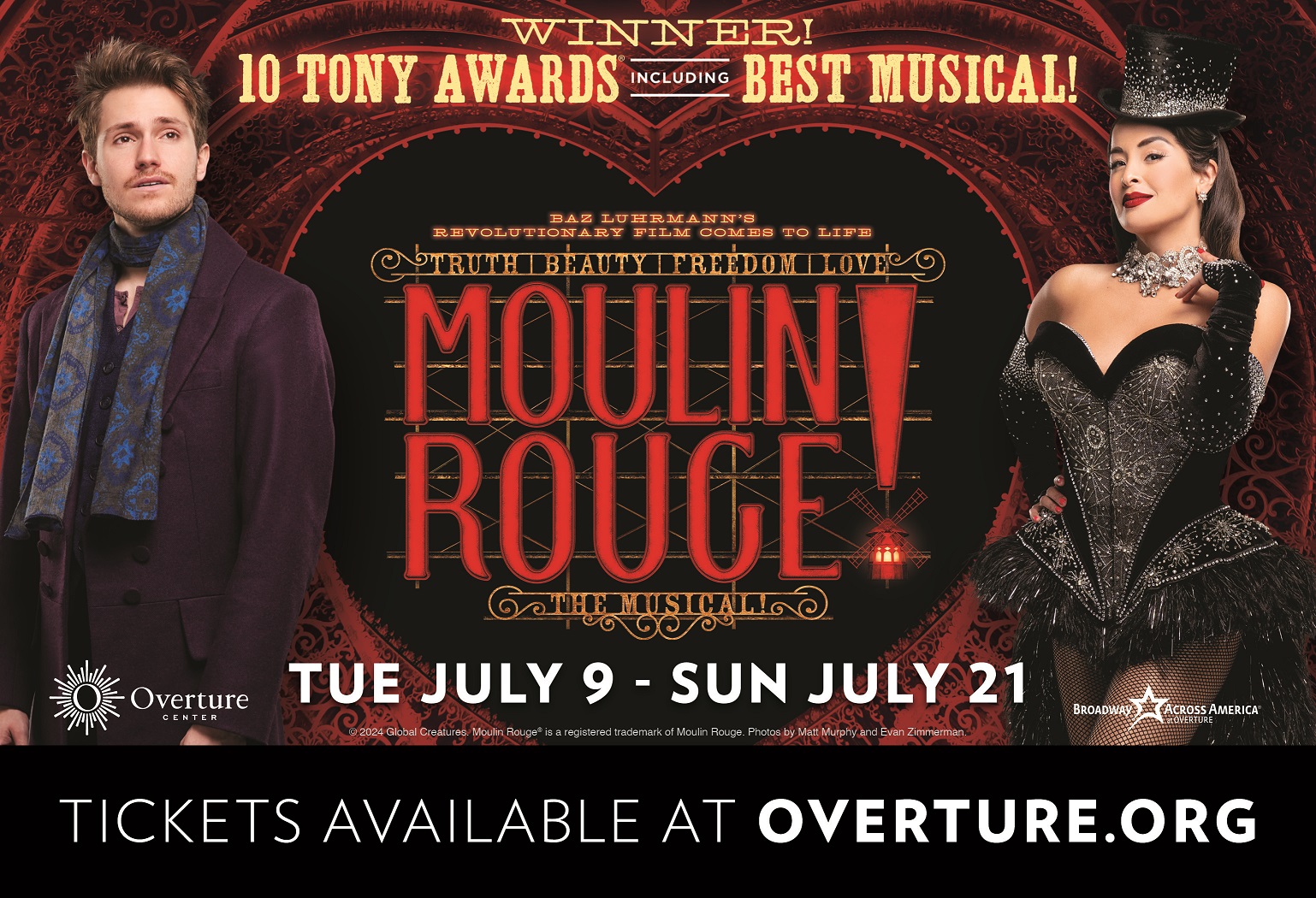UW-Madison Artist-in-Residence Marlon Hall Opens Doorways to a Positive Self-Consciousness: Moving Beyond Pain to Life’s Possibilities

Marlon Hall working on his table top doorways in his loaned studio at the old St. Paul AME Church on E. Mifflin Street.

Part 1 of 2
by Jonathan Gramling
Marlon Hall, UW-Madison’s artist-in-residence, is a fascinating artist, an artist whose work is to engage the community in order to help it heal and move through a door to a positive future that it imagines and brings into beling.
Hall was exposed to art at an early age in Houston, Texas, in a way that many people would not connect to art. His father was an upholsterer and Hall worked in the business.
“I began to engage shapes and structure and form and color early on working as a kid with my dad who was putting patterns together for fabrics,” Hall said. “He was deconstructing and reconstructing ideas. I call it functional sculpture that people live on and live with. The pattern matching was a part of his practice as a functional artist. He put patterns together in unique ways. He was more than just an upholsterer, he was a sculptor and I joined his team at the age of 10.
Hall was diagnosed as dyslexic and dysgraphic. And this led to the development of his artistic talent in a roundabout way.
“My parents bought me a video camera and I became the documentarian for all of the family reunions,” Hall said. “I was the nosy kid asking people questions. I could get away with being occupationally nosy in the beginning. I transitioned from being a functional sculptor to being a film maker and storyteller. I was also an ethnographer, asking people questions about family of origin essence.”
And it also led to the development of his skills in high school.
“My teachers were kind enough in high school to allow me to share some of my reports with video,” Hall recalled. “That’s when I began to engage video as a resource for storytelling.”
Hall further refined his art at Fisk University with an assist from Vanderbilt.
“There was a visiting professor from Vandy, Katherine V. Howard who was an anthropologist,” Hall said. “I took one anthropology course and recognized that was the course of my life. I wanted to be the first Black Indiana Jones without the whip. I decided that I would go into a foreign context and kind of put my finger on the pulse of the people and find principles in those foreign contexts that every human being could connect with and learn from. I later learned that this practice of anthropology could serve my community. I could help solve problems through creative and ethnographic listening.”
Hall’s work eventually led him to Tulsa, Oklahoma, Greenwood and the historic site of the Black Wall Street, which was burned to the ground in 1921 by a white mob and left up to 3,000 people killed.
“My artist statement is to unearth beauty from perceived community brokenness,” Hall said. “And so I am a community-engaged artist who has an anthropological practice. I’m helping communities to look at what some may deem to be ugly to find the beautiful side of the ugly. It’s not to ignore the pain and not to ignore the anger. It’s to welcome the anger, to welcome the pain as a part of the process of new life. The pain and the anger is a means to the end of something new, something beautiful. So I don’t want to dismiss the fact that was some bulls**t that happened in 1921. That was bulls**t. The crap of our past, when we process it properly, can fertilize the future.”
As a symbol of looking at the past, Hall incorporates windows. As a symbol of the possibilities of the future, Hall incorporates doors and doorways.
“My work is to cultivate mirrors through which people can see themselves through their history and windows through which they can imagine the possibilities of the future,” Hall said. “My work is mirrors and windows and doors. Doorways and doors have always been a part of my practice. I believe that stories are pathways. They are portals through which we connect to who people are, why people are and where people are. And so, I always integrate doors as sculptural forms into the fabric of my work. That’s why I am using doors here and using doors in this huge public art project that I am doing in Tulsa, Oklahoma that features the stories of folks whose identities have been minimized. I do these large scale photos of them underneath this underpass that once divided Greenwood —Black Wall Street — from its success. We’re using it to make the folks whole.”
Hall’s work helps people deal with the pain and anger of the past in order to allow them to pass through a doorway where they may envision a world of positive possibilities.
“If we don’t deal with the pain and the anger, it’s coming back for you,” Hall said. “In the genetic makeup of the African American, in the DNA, are the vestiges of slavery. If we are to re-narrate our genetic makeup, it involves welcoming the pain, anger and sorrow in our narrative. Kahlil Gibran says, ‘Your joy is your sorrow unmasked. Wherever there is sorrow, there is some place of joy. And wherever there is joy, there is some place of sorrow. You’re joyful because you remember what it was like to be sorrowful. You’re sorrowful because you remember what it felt like to have joy. They work together. We hold them together.”
Hall’s work has opened up doors of opportunity for him as well.
“Tulsa is just one place where my work has been,” Hall said. “I’ve worked in Nairobi, Kenya and Detroit, Michigan. I’ve done work in Houston where I am from and now I do work here. I like to go to where people have suffered from what I call ‘Cultural Amnesia,’ the systemic trauma that many people who are oppressed experienced. It can knock the memory of their heritage, their humanity right out of them. And so my work is to be a window, a doorway and a mirror through which they can remember the mind, body and the spirit back together.”



